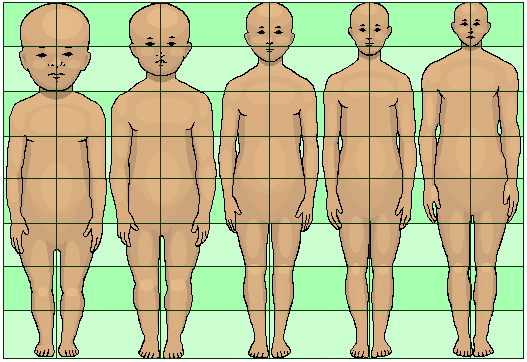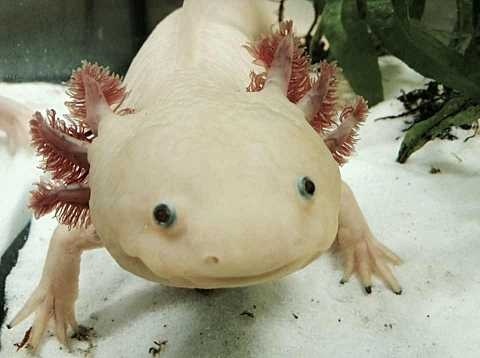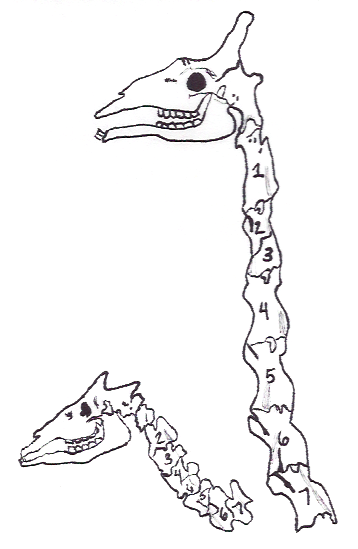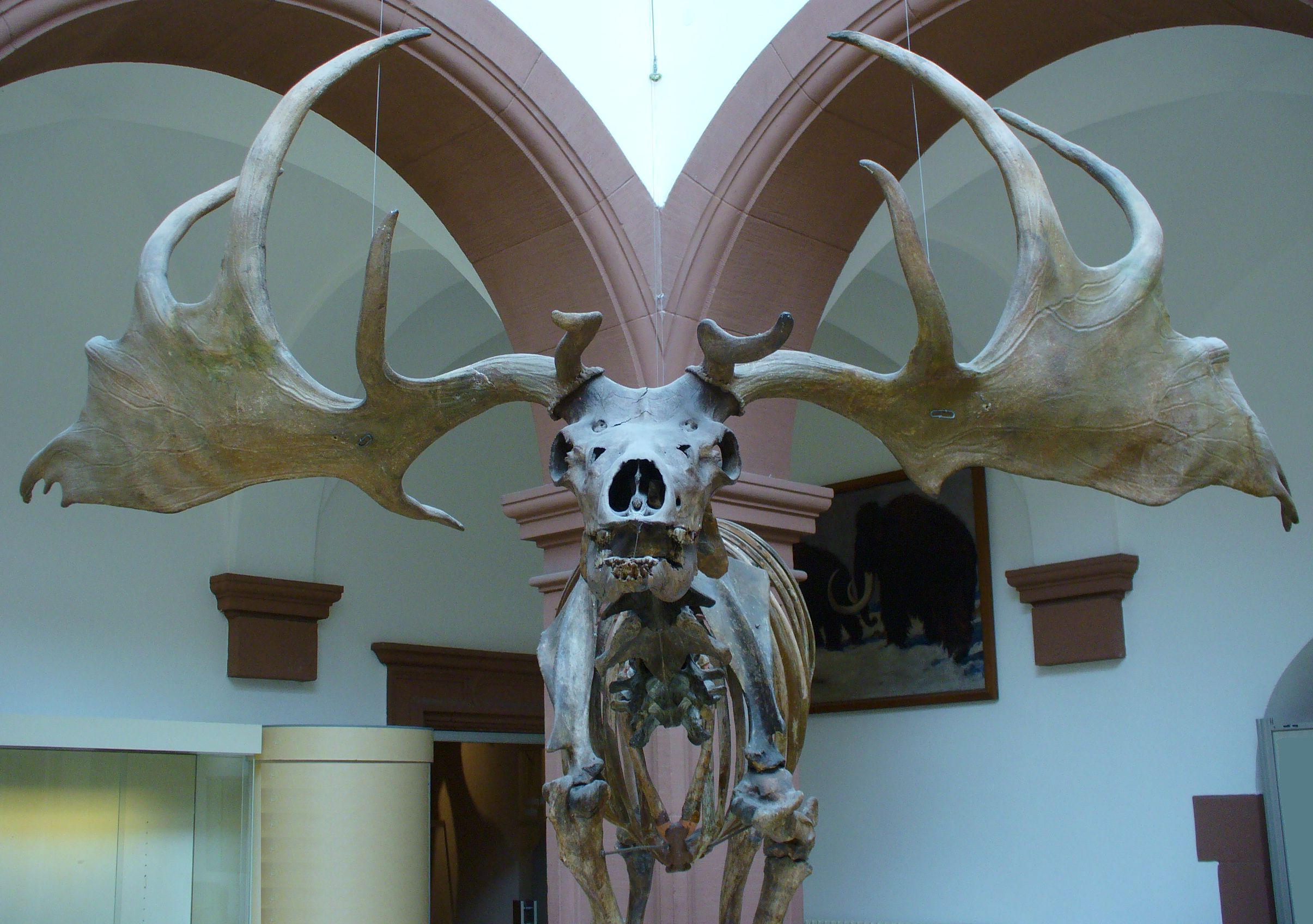|
Neotenic
Neoteny (), also called juvenilization,Montagu, A. (1989). Growing Young. Bergin & Garvey: CT. is the delaying or slowing of the physiological, or somatic, development of an organism, typically an animal. Neoteny is found in modern humans compared to other primates. In progenesis or paedogenesis, sexual development is accelerated. Both neoteny and progenesis result in paedomorphism (as having the form typical of children) or paedomorphosis (changing towards forms typical of children), a type of heterochrony. It is the retention in adults of traits previously seen only in the young. Such retention is important in evolutionary biology, domestication and evolutionary developmental biology. Some authors define paedomorphism as the retention of larval traits, as seen in salamanders.Schell, S. C. ''Handbook of Trematodes of North America North of Mexico'', 1985, pg. 22 History and etymology The origins of the concept of neoteny have been traced to the Bible (as argued by Ashley Monta ... [...More Info...] [...Related Items...] OR: [Wikipedia] [Google] [Baidu] |
Neoteny In Humans
Neoteny in humans is the retention of juvenile traits well into adulthood. This trend is greatly amplified in humans especially when compared to non-human primates. Adult humans more closely resemble the infants of gorillas and chimpanzees than the adults of those animals. neoteny, Neotenic features of the head include the globular skull; (page 134), cited by:"In humans, neoteny is manifested in the resemblance of many physiological features of a human to a late-stage foetal chimpanzee. These foetal characteristics include hair on the head, a globular skull, ear shape, vertical plane face, absence of penal bone (baculum) in foetal male chimpanzees, the vagina pointing forward in foetal ape, the presence of hymen in neonate ape, and the structure of the foot. 'These and many other features', Bednarik says, 'define the anatomical relationship between ape and man as the latter's neoteny'". thinness of skull bones; the reduction of the brow ridge; the large brain; the flattened and broa ... [...More Info...] [...Related Items...] OR: [Wikipedia] [Google] [Baidu] |
Axolotl
The axolotl (; from nci, āxōlōtl ), ''Ambystoma mexicanum'', is a paedomorphic salamander closely related to the tiger salamander. Axolotls are unusual among amphibians in that they reach adulthood without undergoing metamorphosis. Instead of taking to the land, adults remain aquatic and gilled. The species was originally found in several lakes underlying what is now Mexico City, such as Lake Xochimilco and Lake Chalco. These lakes were drained by Spanish settlers after the conquest of the Aztec Empire, leading to the destruction of much of the axolotl’s natural habitat. Axolotls should not be confused with the larval stage of the closely related tiger salamander (''A. tigrinum''), which are widespread in much of North America and occasionally become paedomorphic. Neither should they be confused with mudpuppies (''Necturus'' spp.), fully aquatic salamanders from a different family that are not closely related to the axolotl but bear a superficial resemblance. , wild ax ... [...More Info...] [...Related Items...] OR: [Wikipedia] [Google] [Baidu] |
Salamanders
Salamanders are a group of amphibians typically characterized by their lizard-like appearance, with slender bodies, blunt snouts, short limbs projecting at right angles to the body, and the presence of a tail in both larvae and adults. All ten extant salamander families are grouped together under the order Urodela. Salamander diversity is highest in eastern North America, especially in the Appalachian Mountains; most species are found in the Holarctic realm, with some species present in the Neotropical realm. Salamanders rarely have more than four toes on their front legs and five on their rear legs, but some species have fewer digits and others lack hind limbs. Their permeable skin usually makes them reliant on habitats in or near water or other cool, damp places. Some salamander species are fully aquatic throughout their lives, some take to the water intermittently, and others are entirely terrestrial as adults. This group of amphibians is capable of regenerating lost limb ... [...More Info...] [...Related Items...] OR: [Wikipedia] [Google] [Baidu] |
Peramorphic
In evolutionary developmental biology, heterochrony is any genetically controlled difference in the timing, rate, or duration of a developmental process in an organism compared to its ancestors or other organisms. This leads to changes in the size, shape, characteristics and even presence of certain organs and features. It is contrasted with heterotopy, a change in spatial positioning of some process in the embryo, which can also create morphological innovation. Heterochrony can be divided into intraspecific heterochrony, variation within a species, and interspecific heterochrony, phylogenetic variation, i.e. variation of a descendant species with respect to an ancestral species. These changes all affect the start, end, rate or time span of a particular developmental process. The concept of heterochrony was introduced by Ernst Haeckel in 1875 and given its modern sense by Gavin de Beer in 1930. History The concept of heterochrony was introduced by the German zoologist E ... [...More Info...] [...Related Items...] OR: [Wikipedia] [Google] [Baidu] |
Heterochrony
In evolutionary developmental biology, heterochrony is any genetically controlled difference in the timing, rate, or duration of a developmental process in an organism compared to its ancestors or other organisms. This leads to changes in the size, shape, characteristics and even presence of certain organs and features. It is contrasted with heterotopy, a change in spatial positioning of some process in the embryo, which can also create morphological innovation. Heterochrony can be divided into intraspecific heterochrony, variation within a species, and interspecific heterochrony, phylogenetic variation, i.e. variation of a descendant species with respect to an ancestral species. These changes all affect the start, end, rate or time span of a particular developmental process. The concept of heterochrony was introduced by Ernst Haeckel in 1875 and given its modern sense by Gavin de Beer in 1930. History The concept of heterochrony was introduced by the German zoologist E ... [...More Info...] [...Related Items...] OR: [Wikipedia] [Google] [Baidu] |
Heterochrony
In evolutionary developmental biology, heterochrony is any genetically controlled difference in the timing, rate, or duration of a developmental process in an organism compared to its ancestors or other organisms. This leads to changes in the size, shape, characteristics and even presence of certain organs and features. It is contrasted with heterotopy, a change in spatial positioning of some process in the embryo, which can also create morphological innovation. Heterochrony can be divided into intraspecific heterochrony, variation within a species, and interspecific heterochrony, phylogenetic variation, i.e. variation of a descendant species with respect to an ancestral species. These changes all affect the start, end, rate or time span of a particular developmental process. The concept of heterochrony was introduced by Ernst Haeckel in 1875 and given its modern sense by Gavin de Beer in 1930. History The concept of heterochrony was introduced by the German zoologist E ... [...More Info...] [...Related Items...] OR: [Wikipedia] [Google] [Baidu] |
Peramorphosis
In evolutionary developmental biology, heterochrony is any genetically controlled difference in the timing, rate, or duration of a developmental process in an organism compared to its ancestors or other organisms. This leads to changes in the size, shape, characteristics and even presence of certain organs and features. It is contrasted with heterotopy, a change in spatial positioning of some process in the embryo, which can also create morphological innovation. Heterochrony can be divided into intraspecific heterochrony, variation within a species, and interspecific heterochrony, phylogenetic variation, i.e. variation of a descendant species with respect to an ancestral species. These changes all affect the start, end, rate or time span of a particular developmental process. The concept of heterochrony was introduced by Ernst Haeckel in 1875 and given its modern sense by Gavin de Beer in 1930. History The concept of heterochrony was introduced by the German zoologist E ... [...More Info...] [...Related Items...] OR: [Wikipedia] [Google] [Baidu] |
Amphibians
Amphibians are four-limbed and ectothermic vertebrates of the class Amphibia. All living amphibians belong to the group Lissamphibia. They inhabit a wide variety of habitats, with most species living within terrestrial, fossorial, arboreal or freshwater aquatic ecosystems. Thus amphibians typically start out as larvae living in water, but some species have developed behavioural adaptations to bypass this. The young generally undergo metamorphosis from larva with gills to an adult air-breathing form with lungs. Amphibians use their skin as a secondary respiratory surface and some small terrestrial salamanders and frogs lack lungs and rely entirely on their skin. They are superficially similar to reptiles like lizards but, along with mammals and birds, reptiles are amniotes and do not require water bodies in which to breed. With their complex reproductive needs and permeable skins, amphibians are often ecological indicators; in recent decades there has been a dramatic decli ... [...More Info...] [...Related Items...] OR: [Wikipedia] [Google] [Baidu] |
Lexico
Lexico was a dictionary website that provided a collection of English and Spanish dictionaries produced by Oxford University Press (OUP), the publishing house of the University of Oxford. While the dictionary content on Lexico came from OUP, this website was operated by Dictionary.com, whose eponymous website hosts dictionaries by other publishers such as Random House. The website was closed and redirected to Dictionary.com on 26 August 2022. Before the Lexico site was launched, the '' Oxford Dictionary of English'' and ''New Oxford American Dictionary'' were hosted by OUP's own website Oxford Dictionaries Online (ODO), later known as Oxford Living Dictionaries. The dictionaries' definitions have also appeared in Google definition search and the Dictionary application on macOS, among others, licensed through the Oxford Dictionaries API. History In the 2000s, OUP allowed access to content of the ''Compact Oxford English Dictionary of Current English'' on a website called AskOx ... [...More Info...] [...Related Items...] OR: [Wikipedia] [Google] [Baidu] |
German Language
German ( ) is a West Germanic languages, West Germanic language mainly spoken in Central Europe. It is the most widely spoken and Official language, official or co-official language in Germany, Austria, Switzerland, Liechtenstein, and the Italy, Italian province of South Tyrol. It is also a co-official language of Luxembourg and German-speaking Community of Belgium, Belgium, as well as a national language in Namibia. Outside Germany, it is also spoken by German communities in France (Bas-Rhin), Czech Republic (North Bohemia), Poland (Upper Silesia), Slovakia (Bratislava Region), and Hungary (Sopron). German is most similar to other languages within the West Germanic language branch, including Afrikaans, Dutch language, Dutch, English language, English, the Frisian languages, Low German, Luxembourgish, Scots language, Scots, and Yiddish. It also contains close similarities in vocabulary to some languages in the North Germanic languages, North Germanic group, such as Danish lan ... [...More Info...] [...Related Items...] OR: [Wikipedia] [Google] [Baidu] |
Greek Language
Greek ( el, label=Modern Greek, Ελληνικά, Elliniká, ; grc, Ἑλληνική, Hellēnikḗ) is an independent branch of the Indo-European family of languages, native to Greece, Cyprus, southern Italy (Calabria and Salento), southern Albania, and other regions of the Balkans, the Black Sea coast, Asia Minor, and the Eastern Mediterranean. It has the longest documented history of any Indo-European language, spanning at least 3,400 years of written records. Its writing system is the Greek alphabet, which has been used for approximately 2,800 years; previously, Greek was recorded in writing systems such as Linear B and the Cypriot syllabary. The alphabet arose from the Phoenician script and was in turn the basis of the Latin, Cyrillic, Armenian, Coptic, Gothic, and many other writing systems. The Greek language holds a very important place in the history of the Western world. Beginning with the epics of Homer, ancient Greek literature includes many works of lasting impo ... [...More Info...] [...Related Items...] OR: [Wikipedia] [Google] [Baidu] |
Louis Bolk
Lodewijk 'Louis' Bolk (10 December 1866, Overschie – 17 June 1930, Amsterdam) was a Dutch anatomist who created the fetalization theory about the human body. It states that when a human being is born, it is still a fetus, as can be seen by its (proportionally) big head, lack of coordination, and helplessness. Furthermore, this " prematuration" is specifically human. Gavin de Beer and Stephen Jay Gould wrote about him and further developed this theory of neoteny in humans.) Also Jacques Lacan took Bolk's fetalization theory into account in order to introduce his own thesis on the mirror stage The mirror stage (french: stade du miroir) is a concept in the psychoanalytic theory of Jacques Lacan. The mirror stage is based on the belief that infants recognize themselves in a mirror (literal) or other symbolic contraption which induces apper .... Bolk wrote in Origin of Racial Characteristics in Man, “White skin...started from an ancestor with a black skin, in whose offsprin ... [...More Info...] [...Related Items...] OR: [Wikipedia] [Google] [Baidu] |






.png)


